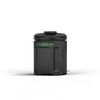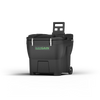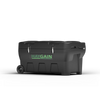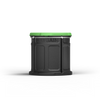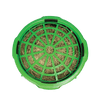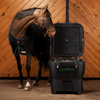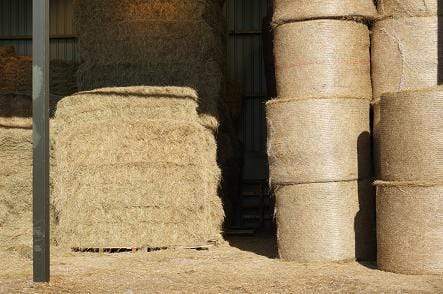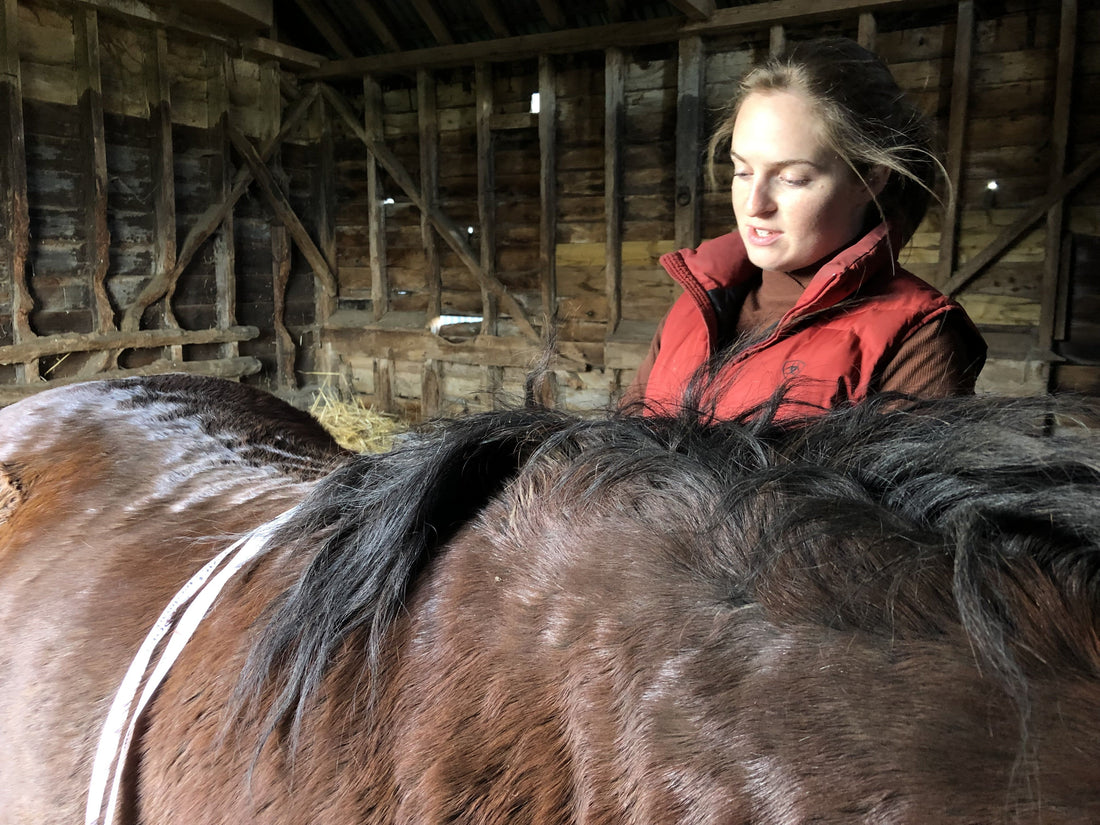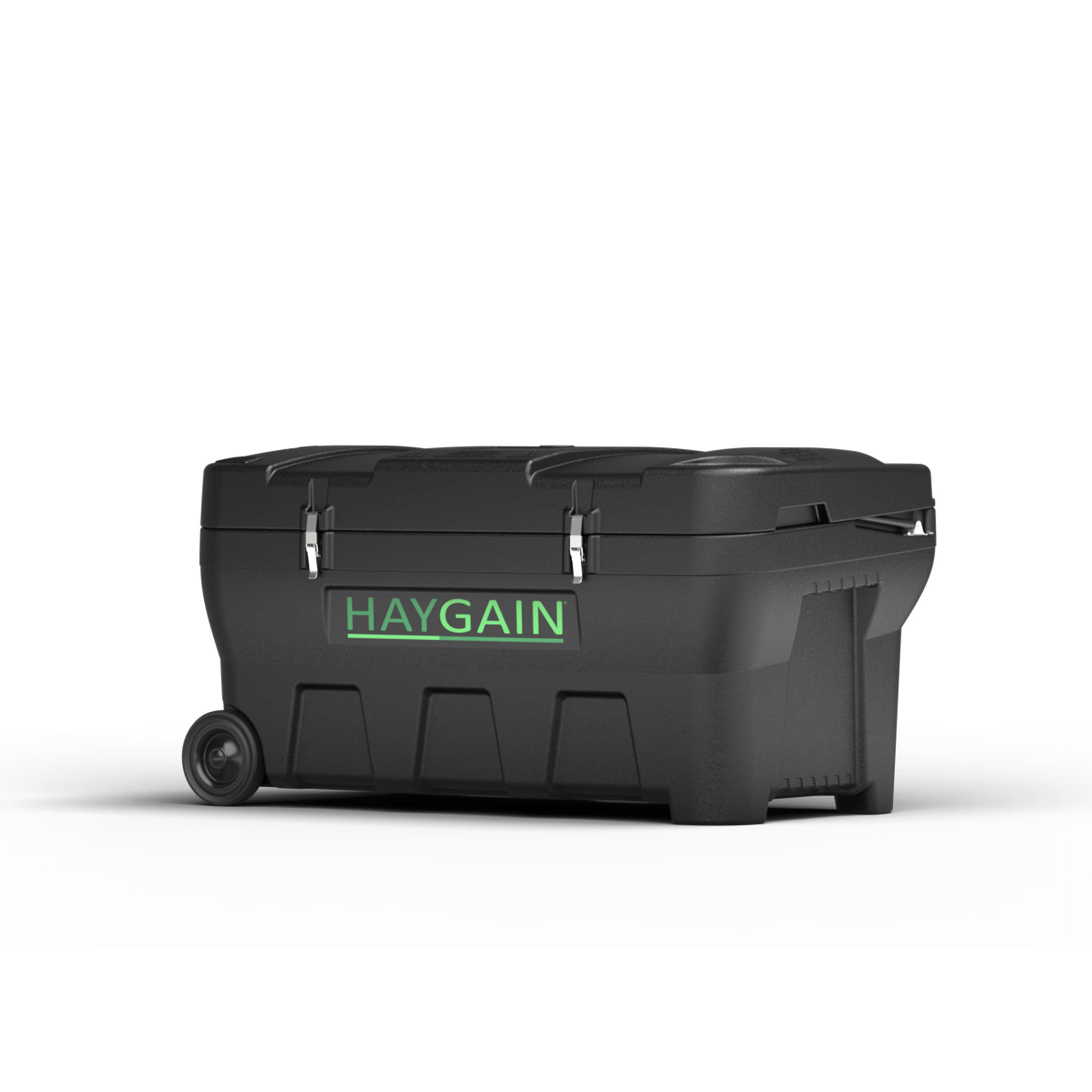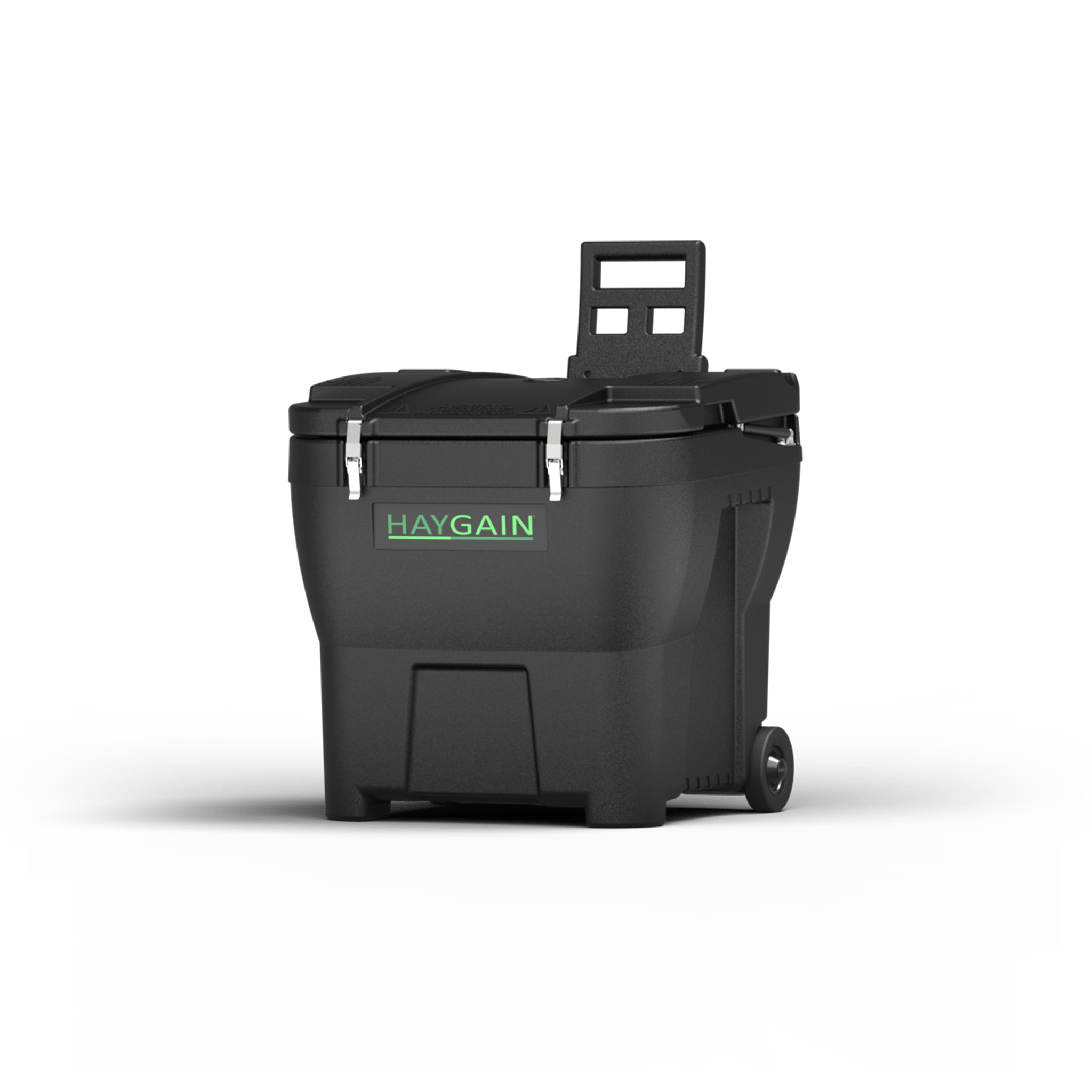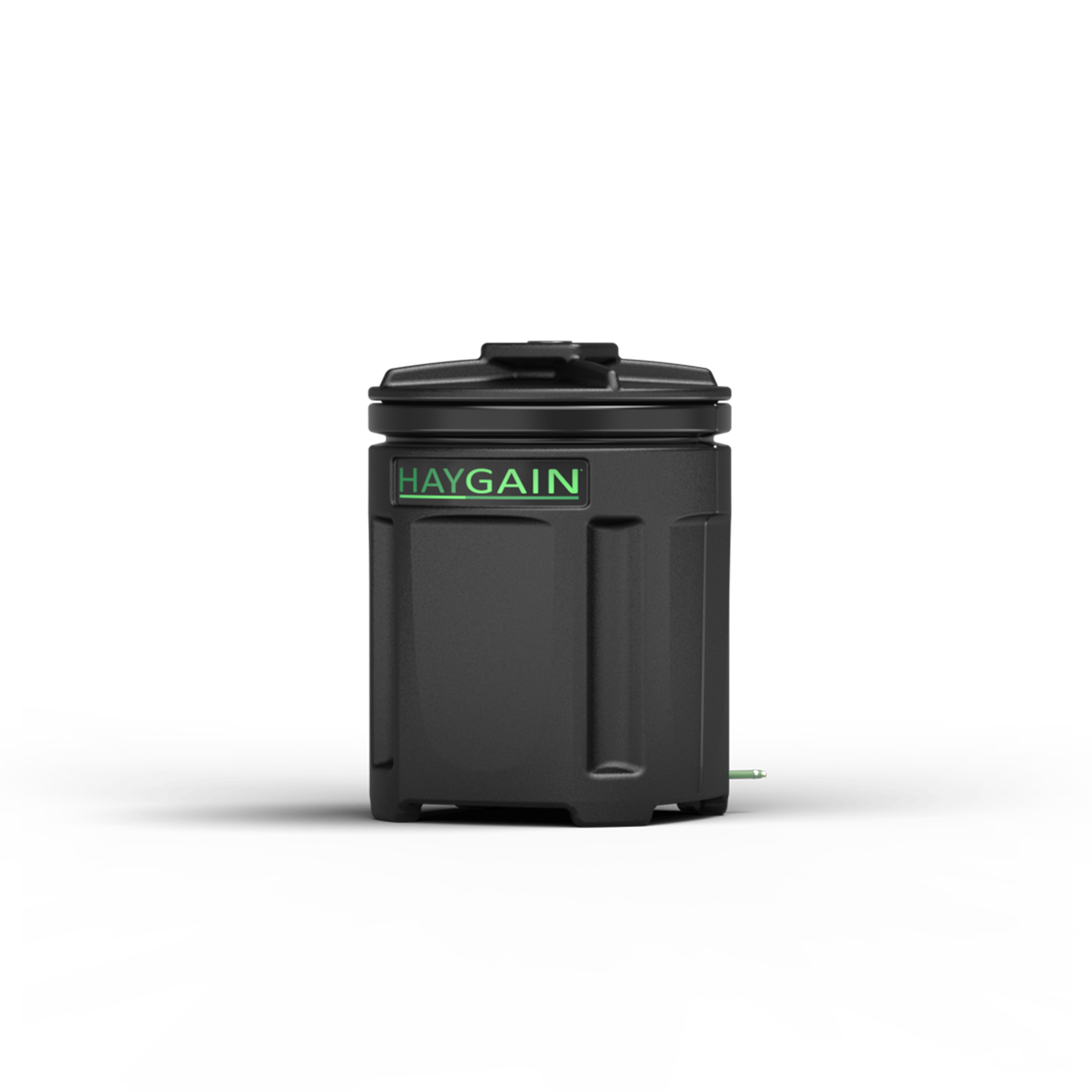Written by Equine Nutritionist Briony Witherow BSc MSc RNutr. FHEA
While forage is sometimes a forgotten aspect in the horse’s diet - despite it representing the largest proportion - a little more thought when we come to sourcing it can go far in enhancing the health of horse and owner alike! Sourcing a more appropriate forage for the type of horse you are feeding, may mean a reduced need to restrict rations for the good doer or, for the poor doer, a reduced need to compensate for sub-par forage with copious amounts of hard feed.
Whether you are sourcing forage for a one hundred horse yard, or just for your own at home, enhancing your knowledge and having a few key questions in mind may help in selecting the best supplier.
Type of forage
There are no hard and fast rules that can be applied when it comes to predicting the suitability of a hay as compared to a haylage – for a full run down of the differences between these two forages see my previous article on “A Cut Above the Rest? Understanding the differences between Hay and Haylage”.One of the key considerations when it comes to buying is storage. While haylage can be stored outside, hay (baring a few exceptions, with the recent availability of some bagged hays) requires undercover storage. Storage capacity is therefore likely to be a leading factor in your decision between hay and haylage.
Shelf-life is also a consideration. When open, haylage may only last 2-7 days
 (depending on the time of year) and therefore may not be suitable for fewer horses, where its use may lead to high levels of wastage. While smaller bales of haylage are available, the cost can stack up. Hay on the other hand, when appropriately stored, can still be fed after several years. However, the nutrient level will decline over time and the dust content may increase (due to leaf shatter). Soaking or steaming is then advisable, although very dusty or visibly mouldy hay should never be fed.
(depending on the time of year) and therefore may not be suitable for fewer horses, where its use may lead to high levels of wastage. While smaller bales of haylage are available, the cost can stack up. Hay on the other hand, when appropriately stored, can still be fed after several years. However, the nutrient level will decline over time and the dust content may increase (due to leaf shatter). Soaking or steaming is then advisable, although very dusty or visibly mouldy hay should never be fed.Besides type of forage (hay/haylage), within these, different grass species are available. With this in mind, forage can be broadly categorised as either meadow or seed hay/haylage. Typically, a meadow hay/haylage refers to a forage that is harvested from permanent pasture and usually contains a variety of grass species. Whereas seed hay/haylage tends to refer to a crop of grass that has been specifically sown for hay/haylage production, typically of one or two species (most commonly ryegrass and timothy). These pastures used for seed hay are often less than five years old (not a permanent ley) and rotationally cropped. While there are no absolutes when it comes to predicting suitability, a seed hay or haylage can provide a more consistent end product.
Seed forages can be more appropriate for good doer types or those with restricted forage access (some performance horses), with the choice in variety of grass often making it easier to select a product that is likely to be most suitable for your horse. Timothy and ryegrass are the most common species available (single grass species products or a combination of these two grass species being widely available). Timothy grasses tend to be lower in overall energy/calories when compared to ryegrass forages, making timothy-based forages often more suitable for the better doer and leisure horse.
Bale size and shape?
Forage is baled for the simple reason of convenience and ease of handling for both transport and storage (baled forage requiring significantly less storage space in comparison to loose hay for example). However, the size and shape of the bale can also be a deal breaker when considering handling the forage on your yard.
 Bales need to be able to be safely moved from their place of storage to use. With a variety of bale sizes now available, ranging from small ‘conventional’ bales (~20kg in weight) to Hesston bales (anywhere from 600kg in weight), and much in between, an appropriate choice bearing in mind convenience and safety can generally be sought. It is worth noting that the weight of bales is very variable and will be dependent on moisture content and baling density.
Bales need to be able to be safely moved from their place of storage to use. With a variety of bale sizes now available, ranging from small ‘conventional’ bales (~20kg in weight) to Hesston bales (anywhere from 600kg in weight), and much in between, an appropriate choice bearing in mind convenience and safety can generally be sought. It is worth noting that the weight of bales is very variable and will be dependent on moisture content and baling density.
The size and shape of the bale can also impact the product. For example, a bale that is larger and denser (in particular round hay bales) can restrict heat escaping, resulting in residual moisture. This can increase the risk of mould in comparison to small conventional bales. However, a good producer as a precaution will often bale round hay bales at a lower moisture content to reduce this risk. Another consideration with the shape of the bale is storage space – round bales are less space efficient than square and stacks tend to be less stable.
Suitability for horses
One of the key reasons for buying from a supplier who produces forage specifically for horses is that they tend to be more aware of the requirements of horse and owner. I am sure I am not alone in having found various foreign objects appear in the bottom of a net/feeder ranging from brush ends to plastic bags. While some of these are unavoidable for even the most diligent of producers, limiting our horse’s exposure to this and the potential for poisonous plants is a clear priority. Forage producers that harvest and market forage specifically for horses tend to be more aware of poisonous plants such as ragwort and will typically take precautions to reduce the risk of these plants ending up in their products. These producers will usually walk fields on a regular basis, use wide field margins and reseed on a regular basis where specific species of grass are grown for hay/haylage, all of which reduce the risk to the horse owner of both poisonous plants and foreign objects. While this care and attention can sometimes come at a premium, for those wanting quality and consistency, this is often a good option.
Consistency is another key factor which is essential for our horses. While a  producer may not be able to necessarily guarantee supply from the same field each time, a producer that grows seed hay/haylage should be able to supply a product of similar grass species and maturity (cut) in order to help provide consistency. This consistency will be somewhat easier to achieve (in theory), if you have greater storage capacity. This allows you to buy in bulk and therefore forage is more likely to be sourced from a single batch. Unless you have a very diligent producer, this is by far and away the best chance of achieving consistency in product. If you are lacking storage, a good relationship and clear communication with your producer is essential – some offer the option of storage for bales from a particular batch for you to collect as and when possible.
producer may not be able to necessarily guarantee supply from the same field each time, a producer that grows seed hay/haylage should be able to supply a product of similar grass species and maturity (cut) in order to help provide consistency. This consistency will be somewhat easier to achieve (in theory), if you have greater storage capacity. This allows you to buy in bulk and therefore forage is more likely to be sourced from a single batch. Unless you have a very diligent producer, this is by far and away the best chance of achieving consistency in product. If you are lacking storage, a good relationship and clear communication with your producer is essential – some offer the option of storage for bales from a particular batch for you to collect as and when possible.
When to buy
The supply and demand of forage is very seasonal in nature. In the UK, demand typically reduces (along with price) from April onwards, until September where demand and price grows. However, it cannot be stressed enough that this trend is very dependent on weather – for example in the 2018 forage harvest, many producers (particularly those in the East) struggled to get multiple cuts from a field and therefore yields were comparatively low. For those in these areas, this year would not have experienced a drop-in price around April due to reduced yields and therefore stocks from the previous harvest.
Region therefore also has a large bearing on forage price. Figures for 2018  showed prices to be highest in the Midlands and East of the country and lowest for Wales and the West. This is likely to change year on year depending on supply, and therefore ultimately yield, which is primarily dependant on the weather. Looking at year on year trends over a longer period, prices rose steadily from 2009 to 2011 and then have been seen to drop gradually until 2017 where we have since seen a rise. Prices at the start of 2019 were similar to those seen in 2011. While a bad harvest will typically be reflected in that year’s prices, it is important to consider that prices may then remain higher for the following few seasons in order to recoup losses without producers pricing themselves out of the market. Considering regional differences, when sourcing in bulk, there are some instances where it may be more economical to source and transport forage from outside of your region.
showed prices to be highest in the Midlands and East of the country and lowest for Wales and the West. This is likely to change year on year depending on supply, and therefore ultimately yield, which is primarily dependant on the weather. Looking at year on year trends over a longer period, prices rose steadily from 2009 to 2011 and then have been seen to drop gradually until 2017 where we have since seen a rise. Prices at the start of 2019 were similar to those seen in 2011. While a bad harvest will typically be reflected in that year’s prices, it is important to consider that prices may then remain higher for the following few seasons in order to recoup losses without producers pricing themselves out of the market. Considering regional differences, when sourcing in bulk, there are some instances where it may be more economical to source and transport forage from outside of your region.
When it comes to timing, if you have the storage available to buy early (April time) or the means to collect straight from the field at harvest, prices are often most competitive. When buying straight from the field, often due to reduced costs for producers (in terms of transport and storage) there are good deals to be had. If buying hay straight from the field, be aware that it may not always be safe to feed immediately. If the dry matter is lower than 86%, microbial activity may still be occurring, making it unsafe to feed. Unless accurate analysis is available to confirm this, it is best to wait 4-6 weeks before feeding. Likewise, haylage requires time for the fermentation process to complete, again a good guide is at least 6 weeks before feeding.
Communication: Getting to grips with terminology
Clear communication between horse owner and producer is essential when trying to source the most appropriate forage. To save you sifting through the chaff, get to grips with key terms often used when discussing forage.
Cut: It is common to see forage advertised described by ‘the cut’ – early or late, first or second –being able to understand the potential implications of this is  essential when making buying decisions. The first or second (or even third) cut refers to whether it is the first crop taken or a subsequent cut from a particular field. This tends to refer to more intensively grown grass crops which are cut once (usually very early in May), then left for 30-45 days and what is regrown is then cut again (July time). While cut ‘number’ can have some bearing on nutritional content, the maturity of the grass when it is cut is more significant. In the crudest sense, late or early cut refers to whether the grass is cut earlier in a more vegetative state which is typically more digestible (better for the poor doer), or later in a more mature state which is typically more fibrous and less digestible (more suitable for the good doer).
essential when making buying decisions. The first or second (or even third) cut refers to whether it is the first crop taken or a subsequent cut from a particular field. This tends to refer to more intensively grown grass crops which are cut once (usually very early in May), then left for 30-45 days and what is regrown is then cut again (July time). While cut ‘number’ can have some bearing on nutritional content, the maturity of the grass when it is cut is more significant. In the crudest sense, late or early cut refers to whether the grass is cut earlier in a more vegetative state which is typically more digestible (better for the poor doer), or later in a more mature state which is typically more fibrous and less digestible (more suitable for the good doer).
Yield: How much crop (i.e. Grass) you get out of a given area.
Batch: Forage that was harvested at the same time out of the same field and under the same conditions.
Seed hay/haylage: A crop of grass that is specifically sown and harvested for forage production. Often single or limited grass species are included.
Meadow hay/haylage: A crop of grass harvested for forage production that is from permanent pasture and often more diverse in grass species.
Supply Options
When it comes to sourcing forage for your horse, the most common options are likely to be either sourcing directly from a producer, whether that be a local farmer or a specific horse-forage producer or sourcing via a supplier, essentially a ‘middle-man’ who sources the forage from the producer and sells it on. This supplier could be your local tack shop, country store or a larger forage supplier. Whichever route you choose for forage supply, it is key to gather as much information about the product as possible, arguably this can be easier when dealing directly with a producer, but a good, knowledgeable merchant can sometimes add a good deal of value when it comes to communication with the producer. In either situation, building a good relationship between yourself and the supplier is key. Confidence in the product and suitability can be gained by asking a few key questions about the product – if answers are confusing or not forthcoming, shop around or perhaps ask to visit a producer – investing in a good relationship where the supplier is clear on your needs is well worth the time and effort for a consistent supply of quality forage.
Key questions to ask your forage producer or supplier:
Whether visiting a forage producer in person or just investigating a potential supplier over the phone, ensuring you get a good understanding of what they produce and how, can help you to make supplier choices.
- How mature was the forage when cut (late/early cut)?
- How long has the forage been stored since it was cut and how has it been stored? Bales stored inside will tend to have a lower incidence of wastage due to mould.
- Is the forage single or multiple species?
- How much forage is available from the same or a similar batch?
- What practices are in place to reduce the incidence or foreign objects and poisonous plants?
- Do you have a typical analysis available for your products?
- How much hay/haylage do you bale each year? This should give you an idea of availability and also consistency of potential supply.
- What sizes/shapes of bale are available (and typical weights)? This will give you an idea of how long a bale is likely to last and therefore a good idea on suitability of price.
- Is storage an option? For those without adequate storage, investigate whether your supplier/producer offers storage options.
Harris, P.A., Ellis, A.D., Fradinho, M.J., Jansson, A., Julliand, V., Luthersson, N., Santos, A.S., Vervuert, I. (2017) Review: Feeding conserved forage to horses: recent advances and recommendations. Animal: An International Journal of Animal Science, 11 (6): 958-967
Muller, C.E. (2012) Impact of harvest, preservation and storage conditions on forage quality. In: Forages and grazing in horse nutrition, EAAP, Volume 132
Watts, K.A., Chatterton, N.J., (2004) A review of factors affecting carbohydrate levels in forage. Journal of Equine Veterinary Science, 24 (2): 84-86
